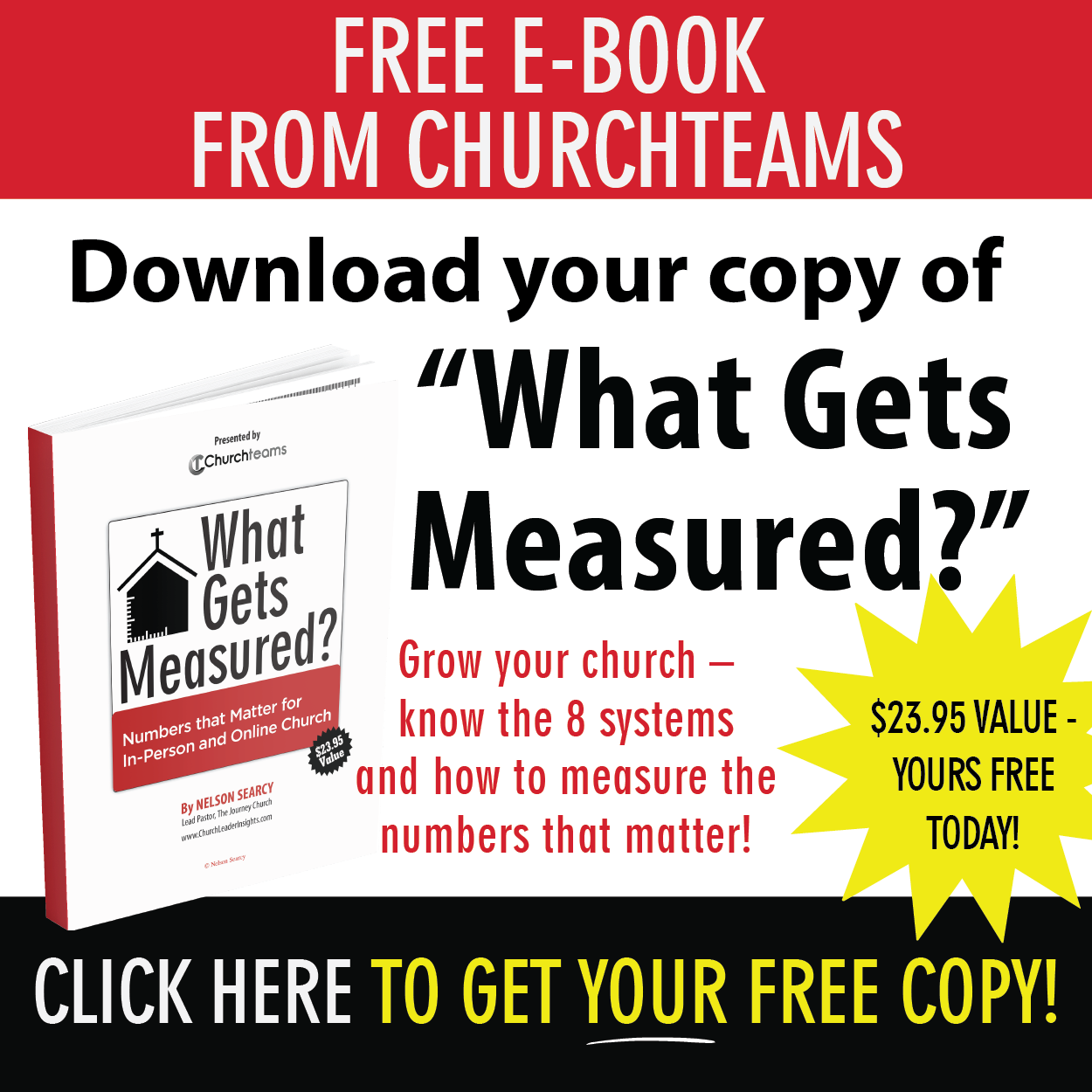 Let's welcome our new friends from Exponential last week. Some of you joined James and me Wednesday for our lunch discussion on the topic of "How to measure the immeasurable parts of discipleship."
Let's welcome our new friends from Exponential last week. Some of you joined James and me Wednesday for our lunch discussion on the topic of "How to measure the immeasurable parts of discipleship."
I love this topic and it was amazing do it with James. We not only shared, but also asked questions and listened to the experience of others. I have reflected on all of it quite a bit since then, and thought it might be worth it to capture and share some of those thoughts. So, here are five ideas on how to improve what you know about discipleship progress in your church.
1. To figure out what to measure, start with scripture.
I just finished Crisis of Confidence by Carl Truman. He makes a compelling case for creeds as a pathway for consistent, orthodox, spiritual formation. Like creeds, discipleship profiles (of which many were available at last week's conference) provide a pathway for consistent, orthodox, spiritual formation. Both must be based on the authority of scripture.
It seems to me that every pastor, staff, elder, or multiplying leader must have a strong grasp on the Biblical passages that underly whatever discipleship path or creed they are using. Otherwise, the profile elements become detached from the life-breathing power of scripture.
In your mind, what passage of scripture drives community? Service? Humility? Faithfulness? Evangelism? Or the other things you consider discipleship "immeasurables"?
2. Don't belittle the data you already have.
At very minimum most churches know how much money they bring in and how many people are attending. Disciplemakers can look at this data and think of it as shallow and unmeaningful. They want to see measurements that relate to group and individual spiritual progress. But, elders and senior leaders of churches rely on this data for things like budgets, staff, volunteers, space, and parking. Creating these environments is the responsibility of executive level leaders as they work to equip people for the work of ministry. And they must be done with excellence and integrity to honor God and the community they serve.
3. Look at the data you already have through different eyes.
When Nicodemus asks Jesus how to be born again (i.e. identify as a disciple) in John 3, Jesus tells him it is like the wind. You may not see it directly but you can see what it does. With help from my friend, Damon Stoddard, a six sigma master blackbelt from Microsoft; we've learned how to recognize wind-ish things like trust, faithfulness, generosity, and teachability from data.
Rework attendance and giving data a little bit and you can discover individual faithfulness and generosity. Or, use it to get an idea of how much trust people have developed in a small group so that you can see which groups are thriving and which ones are struggling. If you're tracking giving and attendance, you can already measure the result of many discipleship immeasurables. The Groups category for this blog (right) has many articles on this topic.
4. Prioritize input.
We all know that the output of any system is only as good as the input. The reasons many churches don't use data beyond the executive level is that they don't have it or they don't know how else to use it. This is particularly true of individual attendance data in groups.
There was a season that the groups ministry I led did not take attendance but estimated it based on number of groups and interactions with leaders. All our groups met off campus, so we didn't need exact data to evaluate and allocate space.
Because of some strong challenges by leaders who were ahead of me, we made some significant changes as a ministry and as a software company. I've said it a hundred times if I've said it once, the difference between having individual attendance data and not having it in terms of measuring group health is night and day. I went from guessing to knowing which groups were healthy and which ones needed attention.
In recent years we've learned to use the same data at the individual level to see the difference between belonging and consistent faithfulness which is foundational to leadership development (2 Timothy 2:2).
5. Automate output
Most of the things we learned about measuring group health we learned in the first ten years of our development as a small groups software company. Our second stage of becoming a church management software, and our third stage of becoming a church communications software have enabled us to significantly expand our ability to capture and use data to measure discipleship. We talked a lot about that last week and I shared in a text workflow many of my previous blog posts that address that.
The coolest thing in the last few years, though, has been the development of technology to create, save, and schedule reports that automatically deliver discipleship immeasurables data to pastors, elders, staff, and ministry directors. To me, this is what technology should be, a behind the scenes utility to deliver vital information that empowers pastoral care and discipleship.
As a discipleship pastor who fervently wanted to make disciples well, this quote from Lord Kelvin made incredible sense to me in light of the stage of history in which we live. It gave words to how I felt. Maybe you can relate.
"When you can measure what you are speaking about, and express it in numbers, you know something about it; but when you cannot measure it, when you cannot express it in numbers, your knowledge is of a meagre and unsatisfactory kind."




